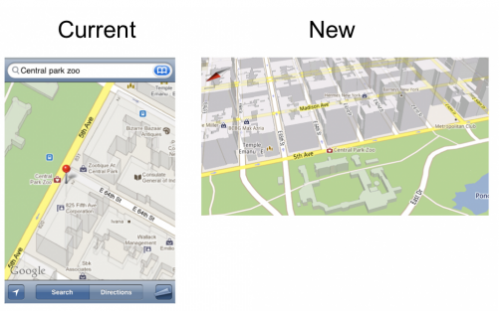Google Launches Improved Maps For Android
Earlier this month we wrote about a new and improved version of Google Maps for Android. Today Google formally released Google Maps 5 for download. The new maps are dynamically rendered, which allow for a range of new capabilities including the ability to work without a persistent data connection. Here are the new features (per […]
Earlier this month we wrote about a new and improved version of Google Maps for Android. Today Google formally released Google Maps 5 for download. The new maps are dynamically rendered, which allow for a range of new capabilities including the ability to work without a persistent data connection.
Here are the new features (per Google’s blog post):
- Tilting: Drag down with two fingers to tilt the map. Tilt while zoomed in on one of the 100+ cities around the world with 3D buildings to see a skyline spring to life.
- Rotating: Twist with two fingers to rotate the map. After tilting to see 3D buildings, rotate around them to gain a new perspective from any direction.
- Smooth zooming: Slide two fingers together or apart, and see the map and labels continuously scale to any zoom level, stopping when your fingers stop.
- Compass mode: Center the map on your location, and then tap the compass button in the top right corner. The map will flip into 3D mode and start rotating to match your perspective, while still keeping all the labels upright and readable.
The ability to rotate Maps and the enhanced 3D buildings are the most obvious changes from the previous version. The following are screens that show “before” and “after” versions for Google Maps.
The richer 3D buildings will automatically appear as users descend to the street level, although I had difficulty reproducing some the views that are presented in the screenshots. In addition, the map also orients itself to the user’s point of view automatically. From a technical perspective it’s a major upgrade; however users may not immediately appreciate that because some of the changes appear as minor cosmetic changes.
Google continues to invest in Maps, correctly recognizing that it is a strategic differentiator for the company broadly and for Android in particular.
Opinions expressed in this article are those of the guest author and not necessarily Search Engine Land. Staff authors are listed here.
Related stories
